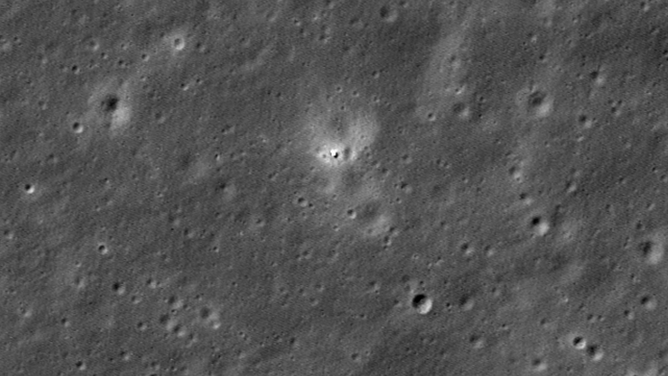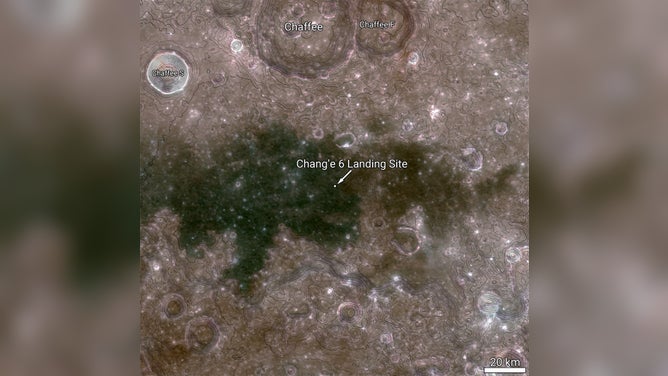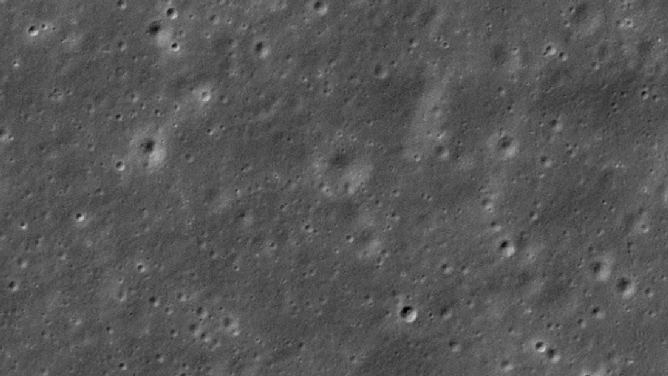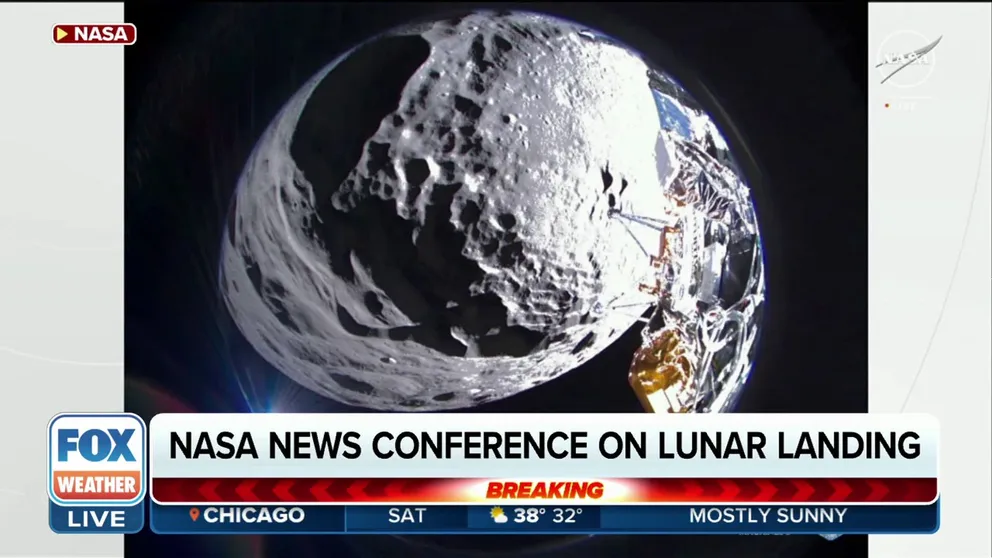NASA spacecraft takes photos of China's Chang'e 6 lander on Moon's farside
Just like anything else human-made that visits the Moon, Chang'e 6's mark was left on the lunar surface. NASA's Lunar Reconnaissance Orbiter camera snapped photos of the Moon's newest visitor.
NASA, Intuitive Machines provide update on Moon lander
FILE VIDEO: Officials from NASA and Intuitive Machines gave an update on the status of the Odysseus lander that touched down on the Moon on Thursday.
New photos from NASA's spacecraft orbiting the Moon show China's Chang'e 6 robot on the far side of the Moon.
NASA's Lunar Reconnaissance Orbiter, or LRO, acts as NASA's eyes on the Moon, providing high-definition images to map the lunar surface in detail. When LRO spots something new, it sticks out, which was the case for a tiny white dot in the Apollo Basin on the far side of the Moon.
The China National Space Administration (CNSA) launched Chang'e 6 in May. It successfully landed on June 1 to explore an area of the Moon's South Pole. The ascent vehicle with the lunar samples launched on June 4 and continues orbiting the Moon until it docks with an orbiter to transfer the samples. China aims to be the first nation to return a sample from the far side of the Moon.
APOLLO 8 ASTRONAUT BEHIND ICONIC PHOTO KILLED IN PLANE CRASH
Like anything human-made that visits the Moon, Chang'e 6's mark was left on the lunar surface.

This image from NASA's Lunar Reconnaissance Orbiter Camera shows Chang'e 6 in the Apollo basin on the lunar farside on June 7, 2024.
The image above, taken on June 7 by NASA's LRO, shows the Chang'e 6 lander. According to the LRO camera team, the lander is on the rim of an eroded 160-foot-diameter crater at the southern edge of the Apollo Basin.
CHINA'S MOON PROBE LAUNCHES BACK TOWARD EARTH WITH SAMPLE FROM FAR SIDE OF LUNAR SURFACE
Another wide-angle view from LRO shows the typography of the region created from basalt lava flows about 3.1 billion years ago.

Regional context of the Chang'e 6 landing site. Image is Wide Angle Camera Empirical Color Mosaic stretched to enhance subtle color differences. The dark area spanning the center of the image is a basaltic mare deposit; bluer areas of the mare are higher-Ti flows, redder areas are lower-Ti. The map is 190 kilometers across, north is up.
(NASA/GSFC/Arizona State University)
Here's a look at the area before and after the landing. The craft's landing created a brighter area around it.

Before/after animation showing the appearance of the Chang'e 6 lander. The increased brightness of the terrain surrounding the lander is due to disturbance from the lander engine and is similar to the blast zone seen around other lunar landers. The before image is from March 3, 2022, and the after image is from June 7, 2024.
(NASA/GSFC/Arizona State University)
The Moon will soon have another visitor for LRO to find.
The Houston-based company Intuitive Machines plans to land its IM-2 robotic mission on the Moon later this year after becoming the first private company to successfully land on the lunar surface earlier this year.
